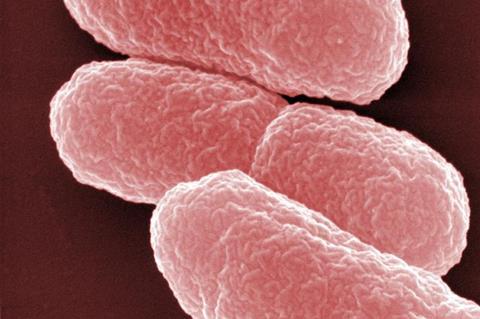“Due to increasing resistance, it is becoming more and more frequent that common and well-tolerated antibiotics no longer work against dangerous bacterial pathogens,” says Prof. Mark Brönstrup, head of the ‘Chemical Biology’ department at Helmholtz Centre for Infection Research (HZI) and a scientist in the DZIF research area “Novel Antibiotics”.

”The last-resort antibiotic colistin is an important helper in this emergency. However, its administration is associated with risks of severe side effects: It has a strong nephrotoxic effect, and long-term consequences cannot be ruled out.”
READ MORE: New study considers risks of colistin and carbapenem resistance posed by aquatic farms
READ MORE: Researchers develop targeted test for antibiotic resistance in clinical Enterobacter species
Colistin was developed in the 1950s. Due to its highly nephrotoxic effect, it was no longer used in humans for many decades after its development. The lack of effective antibiotics, however, has made its revival necessary: for example, in the treatment of dangerous hospital germs such as carbapenem-resistant enterobacteriaceae or Acinetobacter baumannii. Colistin is also on the list of essential medicines of the World Health Organisation (WHO).
Tackling toxicity
It would be advantageous if colistin could be chemically modified so that it is no longer as damaging to the kidneys while maintaining its high antibiotic efficacy.
“Such research approaches have been pursued in various studies, with mixed success,” says Brönstrup. “In our current study, we therefore chose a different approach: We wanted to send colistin in a masked, harmless form through the body via the bloodstream and have it become active in a targeted manner with the help of a switch system placed on the pathogens.”
This so-called click-to-release technique is based on a chemical principle of action in which an active substance composed of two components breaks down into these two components under the influence of a chemical switch, thereby activating the desired drug. This technique has been used in cancer research for about ten years.
Click-to-release
In order to use the click-to-release technique for their research approach, the researchers first needed a second component that would bind to colistin, thereby rendering it harmless, and that could be separated from the active ingredient again with the help of a switch. Several chemical variants of a substance called trans-cyclooctene (TCO) were considered for this purpose, which could be separated from colistin again with the help of the chemical switch tetrazine.
The researchers carried out cell culture experiments with kidney cells to test the toxicity of the colistin modified with different TCO variants.
“Unfortunately, TCO-masked colistin was significantly more toxic than pure colistin, which was initially a bitter disappointment for us,” says Dr. Jiraborrirak Charoenpattarapreeda, a researcher in the ‘Chemical Biology’ department and first author of the study. “However, we were able to solve this problem by further modifying TCO with aspartate. This shifted the charge of the modified colistin into the negative range, largely preventing it from binding to kidney cells and causing toxic effects.”
Mouse model
The scientists tested their click-to-release concept in a mouse model. There were two sites of infection with the bacterium Escherichia coli: one in the thigh and one in the lung. The masked colistin was administered via the bloodstream, and the chemical switches were inhaled via a nasal spray. This was to ensure that the masked colistin was distributed evenly throughout the body, but that the switches could only attach to the bacteria in the lung.
“With this experimental approach, we wanted to test whether the masked colistin in the body is actually only active where it encounters the switch component,” explains Charoenpattarapreeda. And that’s exactly what happened: The bacteria in the lungs were killed, and the inflammation subsided. But the thigh infection did not respond, the bacteria remained unaffected by the masked colistin, and it had no effect there.
Only where needed
“In the present study, we have developed the first systemically acting two-component antibiotic system that is activated at the pathogen by click-to-release chemistry,” says Brönstrup. ”This makes it possible to use colistin in high concentrations only where it is needed – namely directly at the pathogen itself. Side effects can thus be avoided or reduced.”
The researchers hope that this approach can help minimise the side effects of antibiotics and other medical agents in the future and make them more tolerable for patients. “A lot of research still needs to be done before we get there, though. This is still a long way off,” says Brönstrup. “But it could be worth the effort!”
Topics
- Acinetobacter baumannii
- Antibiotics
- Antimicrobial Resistance
- aspartate
- Bacteria
- carbapenem-resistant Enterobacteriaceae
- click-to-release
- colistin
- Escherichia coli
- Helmholtz Centre for Infection Research
- Innovation News
- Jiraborrirak Charoenpattarapreeda
- Mark Brönstrup
- nephrotoxicity
- One Health
- trans-cyclooctene
- UK & Rest of Europe

No comments yet